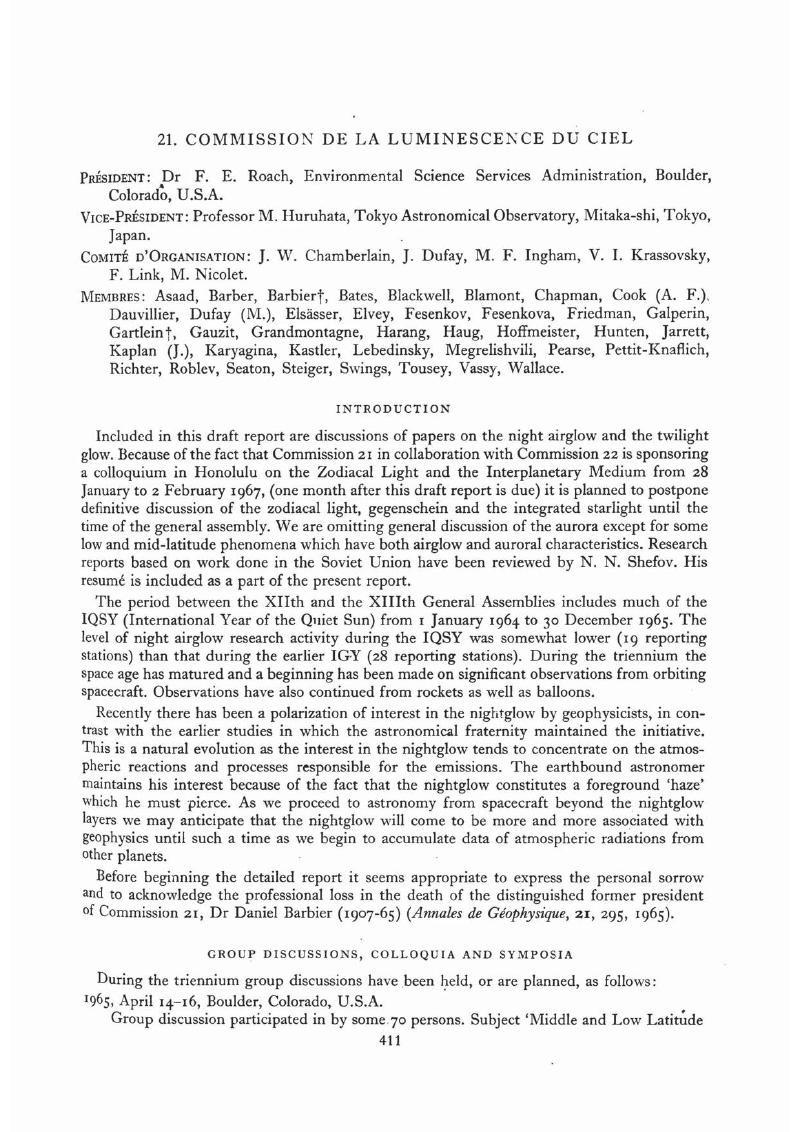No CrossRef data available.
Article contents
21. Commission De La Luminescence Du Ciel
Published online by Cambridge University Press: 25 April 2016
Abstract

- Type
- Reports of Commissions
- Information
- Transactions of the International Astronomical Union , Volume 13 , Issue 1: Reports on Astronomy , 1967 , pp. 411 - 427
- Copyright
- Copyright © Reidel 1967
References
Bibliographie
A. Airglow, General
 emission in twilight, Planet. Space Sci., 14, 1303.Google Scholar
emission in twilight, Planet. Space Sci., 14, 1303.Google Scholar radiation, Planet. Space Sci., 13, 1008.Google Scholar
radiation, Planet. Space Sci., 13, 1008.Google Scholar ions in the nocturnal upper atmosphere at middle latitudes, Planet.
Space Sci..
14, 709.Google Scholar
ions in the nocturnal upper atmosphere at middle latitudes, Planet.
Space Sci..
14, 709.Google ScholarReferences
Sbornik in the references is for ‘Aurorae and Airglow', series ‘Results of IGY\ Publishing House NAUKA of the U.S.S.R. Academy of Sciences. Letters refer to general bibliography, above, pages 415 to 422.




